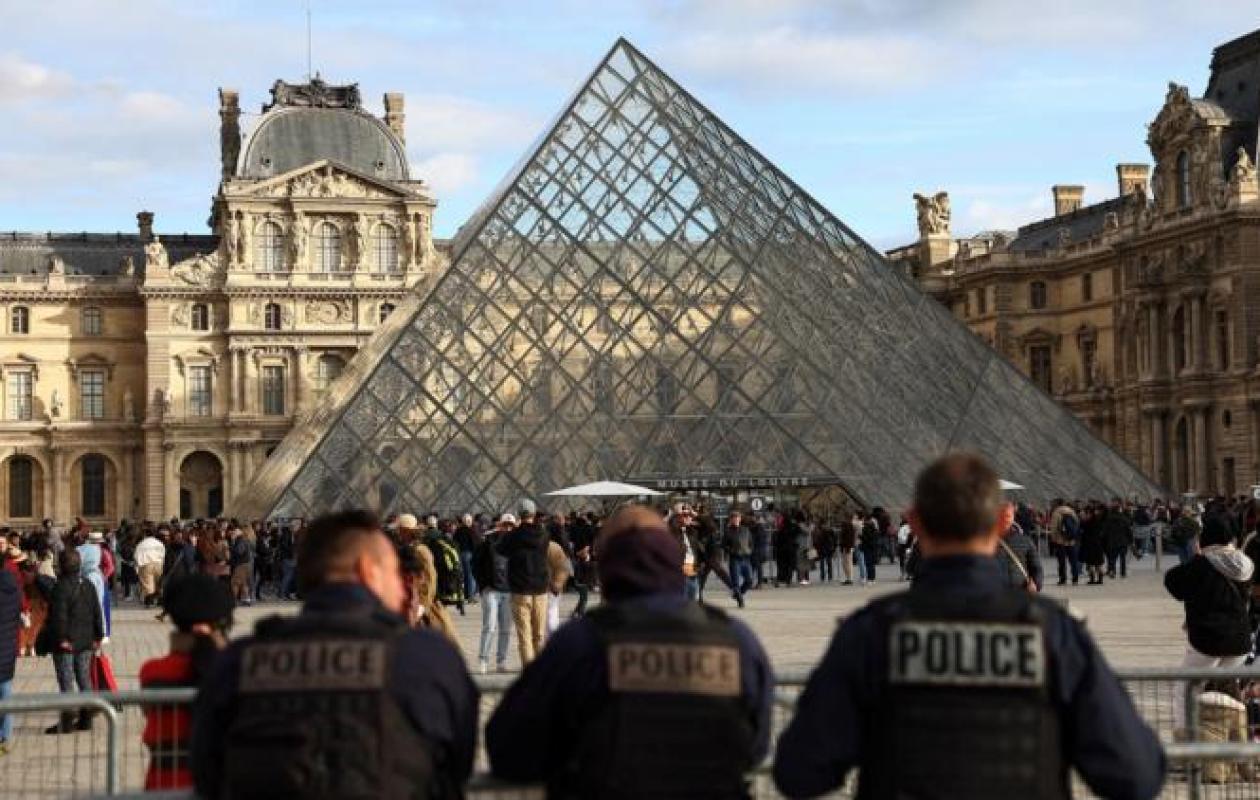
Vol au Louvre: ce que l'on sait, après les nouvelles mises en examen
New suspects charged, no accomplices at the museum, jewels still missing: this is what we know about the spectacular Louvre robbery on October 19, which is mobilizing dozens of investigators.
Two new people arrested on Wednesday evening were charged and placed in pre-trial detention on Saturday, bringing the number of suspects in custody to four.
The suspects are a 37-year-old man, suspected of being one of the four members of the commando that stole the jewels, and his 38-year-old partner, said Paris prosecutor Laure Beccuau.
Two other men living in Aubervilliers (Seine-Saint-Denis), aged 34 and 39, are also suspected of having been part of the commando. Arrested on October 25 – one at Roissy airport while trying to reach Algeria, the other in Aubervilliers – they were formally charged and remanded in custody on Wednesday.
"There are four perpetrators, there is at least one more to be found, plus probably the mastermind or masterminds," Interior Minister Laurent Nunez told Le Parisien.
On Sunday on France Info, Ms. Beccuau also mentioned possible other accomplices, referring to the use of "relay vehicles".
However, she stressed that nothing at this stage suggested any complicity within the Louvre.
The two men from Aubervilliers "made statements" deemed "minimalist in relation to what appears to be demonstrated by the file," according to Ms. Beccuau.
They are charged with organized robbery (15 years imprisonment) and conspiracy to commit organized robbery (10 years imprisonment), as is the 37-year-old man.
His partner is suspected of complicity in organized theft and criminal association.
The couple, who "have children together", "denied any involvement", Ms. Beccuau said.
The man "refused to make any statement," the prosecutor told France Info.
The couple was arrested after their DNA was found in the platform of the freight elevator used during the burglary. While the man's DNA "is significant," investigators are wondering whether the woman's DNA is "transferred DNA," meaning DNA "deposited on someone or an object, which is then redeposited in the platform." "All of this will warrant further investigation," Ms. Beccau emphasized.
Regarding the men from Aubervilliers, the one of Algerian nationality was targeted thanks to DNA found on one of the scooters used for the escape, while the DNA of the second was discovered on one of the broken shop windows and on objects abandoned at the Louvre.
The two men from Aubervilliers, suspected of being the ones who entered the Apollo gallery, "were involved in the same robbery case for which they were convicted in 2015 in Paris," according to the prosecutor.
The 34-year-old Algerian man had no recent employment but had previously worked as a garbage collector or delivery driver. The second man is a 39-year-old unlicensed taxi driver. He is known for aggravated theft and is due to appear in court in Bobigny on Wednesday for damaging a mirror in a police station while in custody.
The man in the couple has "11 convictions on his record, including about ten for significant theft offenses," Ms. Beccuau indicated.
During a hearing before the judge of freedoms (JLD) which AFP was able to partially attend on Saturday, his partner, a resident of La Courneuve (Seine-Saint-Denis), was in tears, saying she was "afraid" for her children and for herself.
The profiles do not correspond to those "that are generally associated with the high end of the organized crime spectrum," said Ms. Beccau, while emphasizing that "today, we have profiles not very well known in organized crime that are rising quite quickly to the top for extremely serious offenses."
The various searches "did not lead to the recovery" of the jewelry, the prosecutor stressed.
Mr. Nunez, who said he was confident they could be recovered, mentioned several hypotheses, "including that they have already been sold abroad."
According to the prosecutor, the Central Office for Combating Trafficking in Cultural Goods (OCBC) is examining all "parallel markets" for resale. Among the hypotheses, she mentioned the possibility that the jewels are "a commodity used for money laundering, or even for negotiation within organized crime," as "currency."
Commentaires (2)
Participer à la Discussion
Règles de la communauté :
💡 Astuce : Utilisez des emojis depuis votre téléphone ou le module emoji ci-dessous. Cliquez sur GIF pour ajouter un GIF animé. Collez un lien X/Twitter ou TikTok pour l'afficher automatiquement.